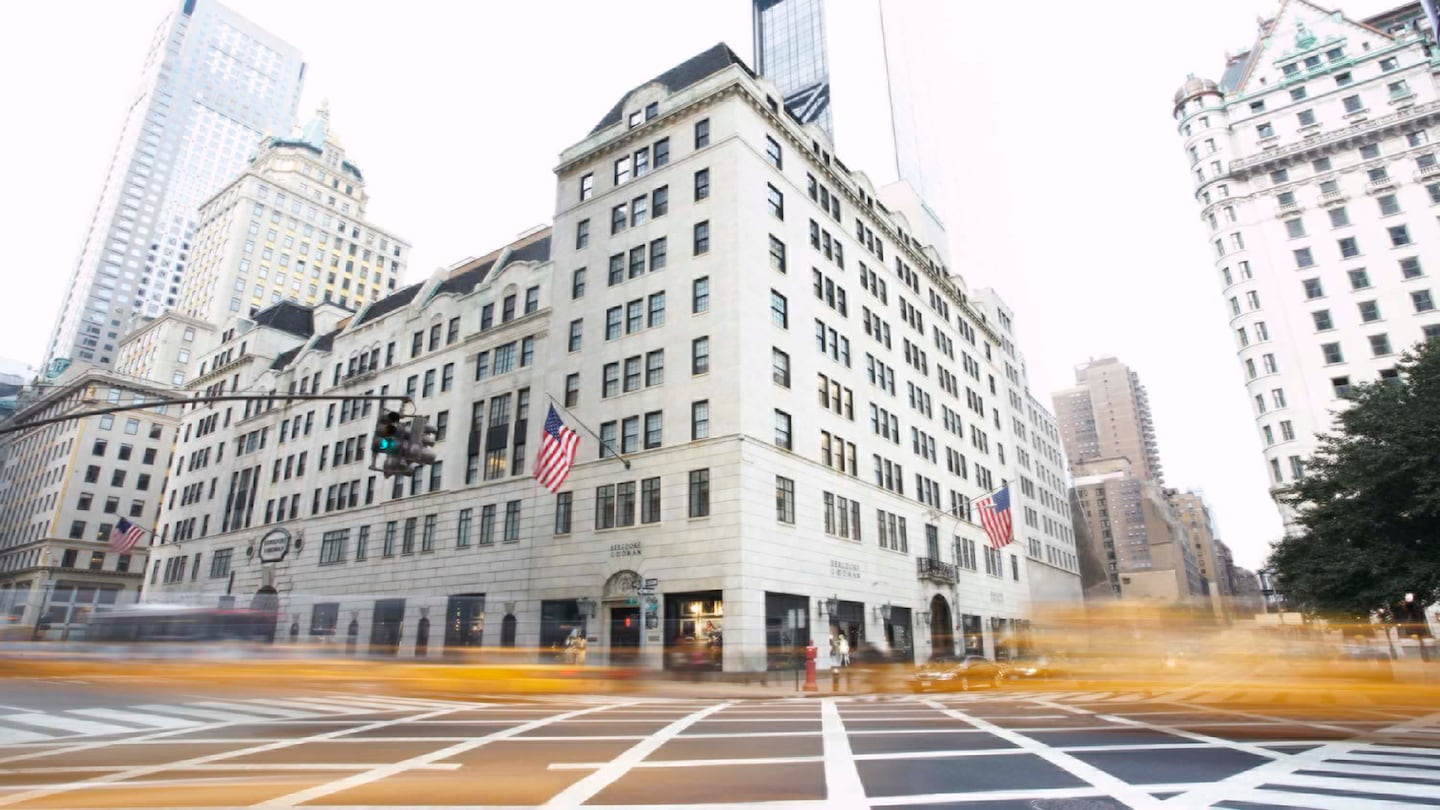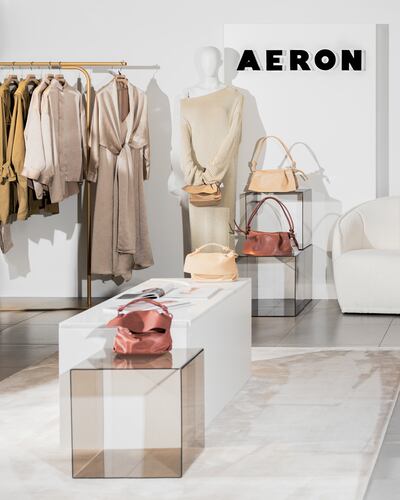
The Business of Fashion
Agenda-setting intelligence, analysis and advice for the global fashion community.

Agenda-setting intelligence, analysis and advice for the global fashion community.

When the pandemic struck two years ago, accessories label Loeffler Randall was ready to embrace a fully direct-to-consumer future.
At the time, most of its sales were through wholesale partners like Bloomingdales and Saks Fifth Avenue. When department stores temporarily closed, the brand adapted. Within months, a majority of its sales were through its own website, according to Brian Murphy, who founded the company with his wife, Jessie Randall in 2004.
“There were some real positives to it, like your stuff isn’t sitting somewhere idle, and you’re getting paid instantly,” Murphy said.
Most stores reopened by the end of 2020, but even now wholesale accounts for a lower percentage of sales — 55 percent today, versus 65 percent in 2019. In other ways, however, Loeffler Randall’s wholesale segment is stronger than ever. For starters, retail partners are sending back unsold merchandise less frequently, and aren’t as quick to discount, Murphy said.
ADVERTISEMENT
More than two years since the pandemic seemingly kicked off an e-commerce revolution, wholesale has come roaring back. Neiman Marcus, Saks Fifth Avenue and others have seen an uptick in foot traffic or brick-and-mortar sales in recent months. Brands are also giving the channel another look, seeing stores as an affordable alternative to online marketing. Gary Wassner, a financier who works with 450 fashion brands, said 75 percent of his clients have seen wholesale grow since the pandemic.
But the brand-retailer relationship itself has transformed. After a turbulent 2020, both stores and the brands they stock are more open to collaboration and compromise. Emerging from the pandemic leaner and, in some cases, financially healthier, retailers are seeking out fresh brands to draw back customers, especially as some of the biggest luxury labels are focusing on direct sales. Neiman Marcus added more than 200 new brands to its roster this spring.
Brands are using newfound leverage to negotiate better terms. Nothing is off the table. Mara Hoffman, for instance, got rid of return-to-vendor agreements, where unsold merchandise is sent back to the brand, altogether in the past two years.
“Before, the retailers were dictating terms,” said Domi Szabó, group wholesale director at Vanguards, which owns the brands Aeron, Nanushka and Sunnei. “Now, it’s a collaboration, a partnership between brands and retailers.”
Before the pandemic, fragrance company D.S. & Durga saw its products “trudge along” on the floors of department stores, according to global president Donna DiDonato. Bottles sat on shelves, isolated from any marketing imagery or experiential components that would provide customers context about the brand.
Today, after switching up about half of its stockists, its products are more likely to be featured in elaborate displays, including a concrete wall installation in Bergdorf Goodman. Sometimes the brand co-hosts events with its retail partners.
“The big difference is the depth of relationship and [having] a like-minded approach to understanding the landscape,” said DiDonato. “Our [new] partners will work to help and nurture the brand.”
In addition to large-format retailers like Liberty and Neiman Marcus, the perfume maker is also looking to work with smaller retail concepts like local art galleries or record shops, DiDonato added. It recently began selling at Neighborhood Goods, a venture-backed multi-brand retail chain that carries a rotating catalogue of new and often digitally native brands. Earlier this year, D.S. & Durga and Neighborhood Goods joined hands in a sampling campaign at music and film festival South by Southwest in Austin, successfully driving traffic into the store and online.
ADVERTISEMENT
“It’s not just putting a product on the shelf,” DiDonato said.
Aeron, the Budapest-based contemporary label under Vanguards, has directed much of its own marketing efforts in building wholesale partnerships, according to Szabó. For instance, Aeron created its own corner in Harrod’s and will open similar shop-in-shop pop-ups this year as a way to find new customers in the US market.

On the retailer side too, there’s been a move to better support vendors on marketing initiatives and events. Neiman Marcus’ SVP, general manager for brand partnerships and merchandising, Paolo Riva, oversees several divisions including women’s fine shoes and accessories, as well as fine apparel. He is also the head of brand partnerships, which means some brand-retailer collaborations are streamlined under one team. The event debuting an exclusive capsule collection, for instance, will be planned in tandem with the collection itself.
“Partnership is very tailored,” said Geoffroy van Raemdonck, chief executive of Neiman Marcus Group, adding that the retailer provides some of its partners with extensive customer data that can inform their own design and merchandising process.
“Our merchants will sit with their merchants in Europe and literally spend a big amount of time on what is the big opportunity for growth,” he added.
To support their retail partners, brands like Aeron are much more aware of their need for marketing resources, such as imagery to post on social media, and exclusive product offerings.
“We have to think about how we can support our wholesale partners in this new era,” said Szabó. “Finding ways together, what digital assets do they need, what marketing elements do they need.”
Brands are now more willing to experiment with different wholesale models, including concessions, said Morty Singer, chief executive officer of retail consultancy Marvin Traub Associates.
ADVERTISEMENT
The concession model allows brands to build out their own space within a larger retailer, with full control over what to sell and how to display the products. Rather than ordering in bulk up front, the retailer receives a percentage of each sale. It offers higher margins for the brand but requires more work. This is the predominant model in European department stores like Selfridges and Galeries Lafayette, but has become more widespread in the US recently, Singer said.
Especially for brands that have gotten used to selling direct during the pandemic, the concession model offers them a higher degree of control and is cheaper than opening their own stores.
Another Tomorrow, a new contemporary womenswear label, prefers the marketplace drop-shipping model for its US business, because of its higher margins. Drop-shipping means the brand sells on the website of a third-party retailer like Saks Fifth Avenue, but it takes care of all the shipping, handling and returns when an order is placed. In exchange, Saks receives a percentage of each sale. Another Tomorrow opts for traditional wholesale with international stockists, founder Vanessa Barboni Hallik said, because the logistics are simply too complicated to manage from the US.
Aeron too is exploring the marketplace model after seeing a number of wholesale partners considering the shift toward drop-shipping agreements, Szabó said.
Even as brands beef up their wholesale channels again, the savviest are picky about who they choose.
Beyond negotiating the best terms regarding discounting and sell-through rates — or how much a vendor needs to sell per collection without having to purchase products back from the retailer — sharing the same goals and approaches to driving sales is an important facet of any partnership, brand executives say.
Before the pandemic, Mara Hoffman worked with over 200 retailers. When Covid-19 struck, that number shrivelled to 15. Today, it has 38 wholesale partners and is still expanding that list, seeking partners who are willing to order multiple collections a year.
“Wholesale will always bring brand awareness, expose your brand to a customer base that might not be super familiar with you … [but] we know what we can do with our own channel now,” said Macarena Cifuentes, commercial vice president at Mara Hoffman.
In the age of access, the wholesale distribution model, which comes with inventory risk and high working-capital requirements, no longer makes a lot of sense.
More and more emerging fashion designers are adopting a direct-to-consumer model, wooed by the promise of higher margins and a closer relationship with the customer. Can they really do without wholesale?
Many fashion brands remain dependent on department stores, e-tailers and multi-brand boutiques to drive sales, but the cost of doing business with these third parties is growing. Here’s how labels can protect themselves.

Cathaleen Chen is Retail Correspondent at The Business of Fashion. She is based in New York and drives BoF’s coverage of the retail and direct-to-consumer sectors.